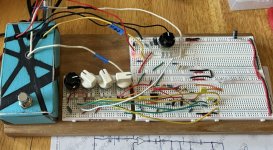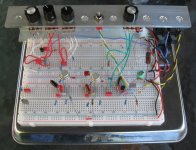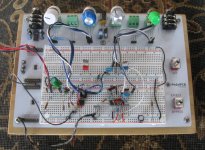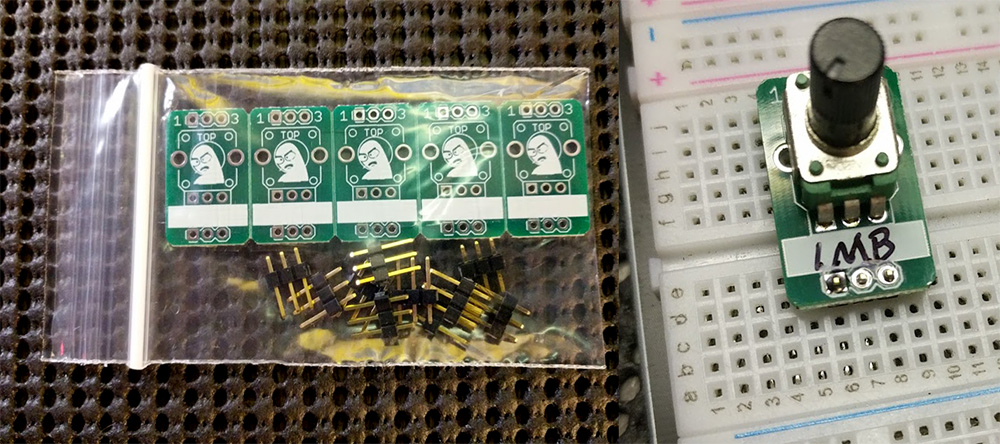Very encouraged with my Guvernator breadboard attempt. This my first “more than a simple boost”-type circuit to actually get everything working as it should. Learning a lot about troubleshooting/finding dumb mistakes/etc… Tone pot wiring seems to be where I screw up the most.
The circuit isn’t horribly noisy, but there’s definitely a buzz. I’m guessing that’s to be somewhat expected with overdrives on breadboards though - isn’t it? Also - how important are “audio” quality components when it comes to noise/overall performance? The IC and pots came from stompbox parts dot com, but the resistors/caps/diodes are Amazon “whatever” brand assorted kits.

The circuit isn’t horribly noisy, but there’s definitely a buzz. I’m guessing that’s to be somewhat expected with overdrives on breadboards though - isn’t it? Also - how important are “audio” quality components when it comes to noise/overall performance? The IC and pots came from stompbox parts dot com, but the resistors/caps/diodes are Amazon “whatever” brand assorted kits.






